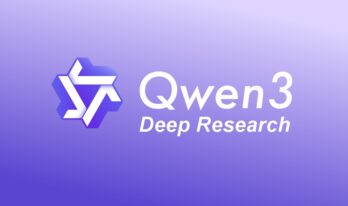Big data has been serving organizations for long. Managers rely more and more on such solutions to minimize risks in decision making. In an increasingly competitive environment, data is more critical than ever in day-to-day operations.
In 2019, the demand for companies to analyze data in real-time increased. Data analysis can improve the customer experience and, therefore, the turnover.
With large volumes of data to process and interpret, growth is expected in 2020 as well.
Big Data Trends and Predictions for 2023
The newest big data trend for 2020 is NLP. It will help big data systems to understand the information obtained in a better way, thereby facilitating user interaction.
NLP will be humanizing data, allowing more natural conversations and interactions.
Voice applications and analytics have not changed much in recent years. Capturing different intonation and differently pronounced accents presented challenges.
But NLP owing to artificial intelligence has made progress here.
Spreadsheets have played an essential role in engaging companies in the analysis. Even if this method retains many followers and supporters, it seems less and less adapted to the current context.
With graphical analysis, businesses could more easily determine the connections made between many data points and speed up decision-making.
Also read: Big Data Trends and Predictions to look out for in 2019
IT departments and data specialists should rely on different levels of analysis this year. There will always be a basis for rudimentary analysis, then there will be a possibility of optimizing this analysis with data queries generated by machine learning.
ML platforms could evaluate information inputs faster than humans and also discover issues that could otherwise go unnoticed. Thus, the big data systems supported by deep learning or machine learning can transform the data of a business into simpler and more accurate reports.
The augmented analysis is based on the use of statistical technologies and machine learning to improve the performance of data management and analysis.
According to Gartner, poor data quality costs businesses an average of $15 million a year. The consequences of poor data quality are numerous such as imprecision, client misunderstanding, results of biased actions, erroneous operations, poor decision-making or even failure to comply with GDPR standards.
The observation is, therefore, to facilitate and optimize the use of big data as the quality of the data is essential. It is expected that the new governance tools will ensure the confidentiality and integrity of data until it disappears again in the background.
Productivity is expected to increase globally with automation. Organizations are moving towards the automation of data processing to speed up their decision-making.
The primary objective will be to automate the data collection and preparation processes in order to save the time that data scientists spend on these tasks.
This use of artificial intelligence will allow them to focus more on strategic and creative missions.
In addition, data automation is also going to be of great help for decision-makers, as they’ll be able to look a step further & assist the growth of their companies.
Currently, predictive models are mainly complex mathematical algorithms mastered by data scientists. In 2020, big data solutions will make them accessible to everyone.
From historical and current data, we’ll be able to generate clear and precise trends and predictions, while having a notion of the risks and chances of this happening.
The objective of continuous intelligence on which all big data solutions are expected in 2020 is to integrate real-time analyses with business solutions. Thus, the responses to the actions implemented for any profession will be immediate and visible on their indicators.
The flow will be continuous between the creation of the data and its analysis. Everything will be done without latency. This will promote greater precision and efficiency in the actions of the various departments of the company.
Concluding Words: Big Data Trends for 2023
Although big data has not reached its peak of splendour and is a concept that seems very recent, the truth is that its economic impact is already visible and there are many companies that have observed their upward trend in advance.
IDC says by 2025, around 30 percent of data generated will be real-time. Organizations that are looking forward to providing better customer experience (CX) & grow share must have data infrastructures that can match this growth in real-time data.
You may also like to read:
Understanding Augmented Analytics and its Benefits to the Business
How is Big Data Analytics Helpful for Security Intelligence?




